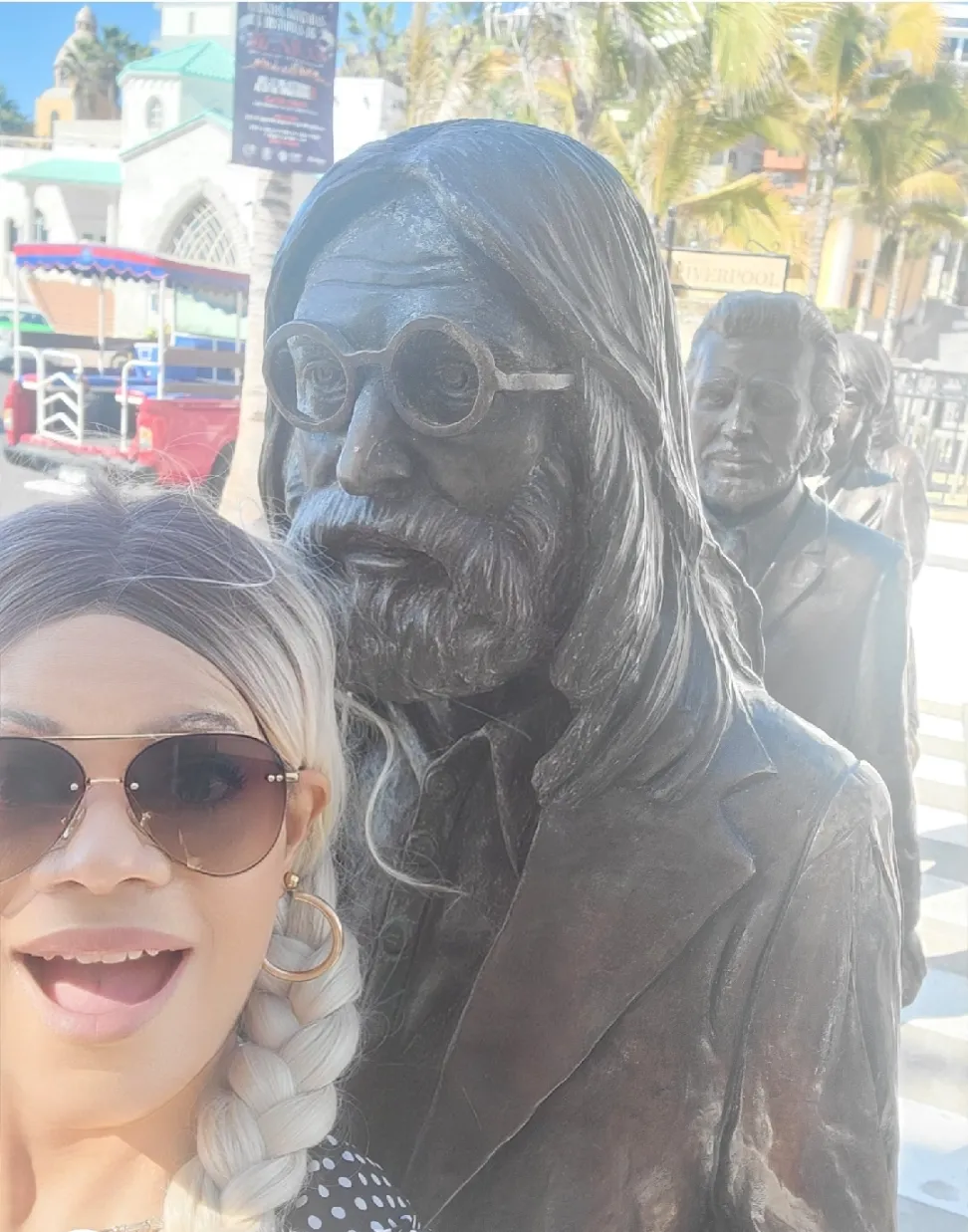The truth that often surprises many hearing people is that Deaf people not only travel, but they do so independently and in groups. I vividly remember an encounter with a hearing woman who was amazed to learn that I am a Deaf international traveler that is comfortable to venture out alone or with companions. I am deeply grateful to my hearing parents for the incredible travel opportunities they provided, taking my hearing siblings and me to countless destinations around the globe.
For Deaf people, embarking on a journey can be an equally transformative adventure, brimming with unique experiences and opportunities for personal growth. In this article, we will explore the realm of Deaf and Hard of Hearing travels, shedding light on the positive aspects as well as the challenges they may face. Unfortunately, I currently lack sufficient information to delve into DeafBlind travels, but I hope to share insights on that topic in the near future.
Positive experiences
Many Deaf travelers have reported an increased sense of self-confidence and independence when they are abroad. They feel empowered to rely solely on their own skills and knowledge to navigate unfamiliar places. Here is a list of some of their positive experiences:
- Cultural exchange and connection: Deaf and Hard of Hearing travelers excel at connecting with people beyond their individual language barriers. Through sign language, they foster genuine cultural exchanges and establish meaningful connections with people from diverse backgrounds.
- Enhanced visual experiences: Deaf and Hard of Hearing travelers embrace the world’s beauty through their heightened visual perception. They immerse themselves in breathtaking landscapes, vibrant cities and artistic masterpieces, truly cherishing the wonders of their destinations without distraction from the sounds around them.
- Community support is vital for Deaf and Hard of Hearing travelers, because they form a tight-knit network that offers valuable assistance and resources. Through this network, the Deaf and Hard of Hearing can rely on community recommendations for accessible accommodations, attractions and transportation options, guaranteeing enjoyable and stress-free travel experiences.
- Increased empowerment and independence: Traveling holds the remarkable ability to empower Deaf and Hard of Hearing people by promoting self-advocacy and self-reliance. The process of navigating unfamiliar environments, managing logistics and conquering obstacles cultivates essential life skills, leading to increased confidence and independence.
Challenging experiences
As a Deaf traveler, I have personally encountered numerous challenges during my journeys. It’s important to acknowledge that my experiences may differ from those of other individuals. One common difficulty I face is the limited availability of information regarding accessibility of tourist attractions and transportation services in unfamiliar countries. Listed below are some of the challenging experiences faced by Deaf and Hard of Hearing travelers.
- Communication barriers: One of the key challenges faced by Deaf and Hard of Hearing travelers is communication. While some countries offer sign language interpretation services and have Deaf-friendly infrastructures, many destinations still lack adequate accommodations. Limited access to information, difficulty in obtaining assistance, and miscommunication can hinder the travel experience. By improving communication channels, training tourism professionals and utilizing technology solutions, we can create a more inclusive and enjoyable travel experience for Deaf and Hard of Hearing travelers.
- Safety concerns: In emergency situations or when traveling alone, Deaf and Hard of Hearing travelers may face additional safety challenges. The inability to hear announcements, alarms, or warnings can potentially put them at a disadvantage and at risk for their lives. It is crucial for Deaf and Hard of Hearing travelers to be prepared, remain vigilant and have contingency plans in place.
- Lack of awareness and accessibility: Travel destinations have made strides in accessibility, but there is still room for improvement in providing Deaf-friendly facilities and services. Accessible accommodations, visual notifications and inclusive tour experiences are key aspects that need attention to ensure an inclusive travel environment for all.
- Attitudinal barriers: Deaf and Hard of Hearing travelers sometimes face negative attitudes or misconceptions from people who may lack awareness or understanding. Stereotypes and assumptions about deafness can result in uncomfortable or exclusionary situations. Raising awareness and promoting inclusivity are crucial steps towards addressing their challenges and will assist in creating a more welcoming environment for them.
Deaf and Hard of Hearing travelers greatly benefit from a range of apps to enhance their travel experiences and address communication barriers. Here are some commonly used apps available on Google Play and the Apple App Store:
- Sign language translation apps convert spoken or written language into sign language, aiding communication with non-sign language users.
- Captioning apps offer real-time captioning or transcription services, enabling Deaf travelers to comprehend spoken conversations or announcements. These apps utilize voice recognition technology to convert spoken words into text. Popular choices include Ava, Google Live Transcribe, and Otter Voice Meeting Notes.
- Travel and navigation apps play a crucial role for Deaf travelers, assisting them in trip planning, locating accessible attractions, and navigating unfamiliar destinations. Apps such as Google Maps, Citymapper, and TripIt provide valuable features like directions, public transportation information and points of interest to ensure a smooth and enjoyable travel experience.
- Communication apps: Instant messaging apps with video call capabilities are essential for Deaf travelers to communicate with friends, family, and local contacts. Apps like WhatsApp, Skype, FaceTime or Zoom enable real-time communication through sign language or text messages.
- Hearing aid control apps, such as ReSound Smart, Phonak Remote and Widex Beyond empower Deaf travelers who use hearing aids or assistive devices. These apps allow users to conveniently adjust volume, settings and equalization, ensuring an optimal hearing experience throughout their journeys.
- Social media apps like Facebook, Instagram and Twitter are widely used by Deaf travelers to connect, share experiences and seek travel recommendations within the Deaf community.
- Emergency and safety apps offer vital safety information and emergency alerts, benefiting Deaf travelers who may not have access to auditory announcements or alarms. Apps like Emergency SOS, Red Panic Button and TravelSafe Pro provide an extra layer of security and peace of mind during travel.
Deaf and Hard of Hearing travelers embark on journeys filled with positive experiences, personal growth and memorable encounters, despite the unique challenges they may encounter. With resilience and determination, they navigate the world, embracing cultural exchange, enhanced visual perception and community support. By promoting accessibility, awareness and understanding, we can create an inclusive environment where all travelers, regardless of their hearing abilities, can explore the world and embrace the joys of travel.
As a Deaf traveler, I have personal preferences when it comes to finding efficient apps for communication and enhancing my travel experiences. These apps have greatly contributed to the success and positivity of my journeys. It’s important to explore various app options based on individual needs and preferences to enhance travel experiences. Availability and popularity of apps may vary depending on personal preferences, location and technology. Happy travels!
If you have any questions, comments or concerns, please feel free to contact me at: angelalynn@theangelalynnshow.com


